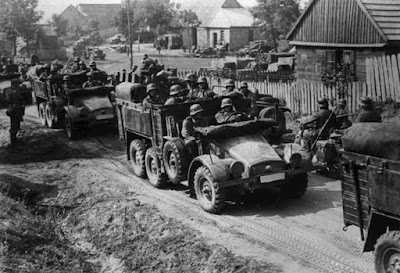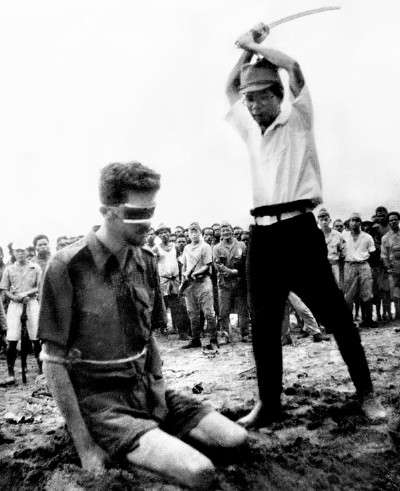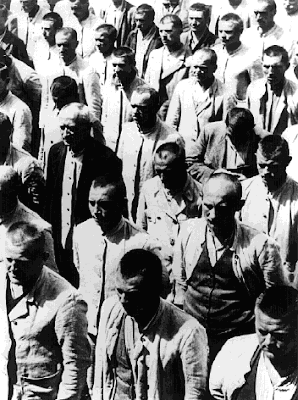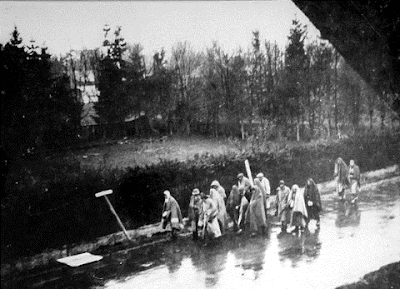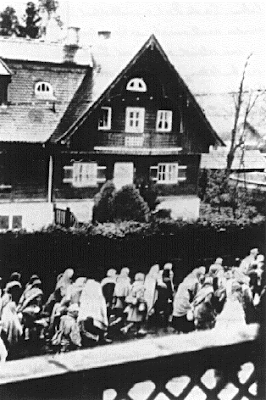Nothing is worse than war? Dishonor is worse than war. Slavery is worse than war.
—Winston Churchill
Part 2
 GERMAN CAVALRY IN RUSSIA
GERMAN CAVALRY IN RUSSIA
Source
 ART HIDDEN BY THE NAZIS
ART HIDDEN BY THE NAZIS
It is no idle statement that when the Third Reich began to crumble in 1945, many German fanatics went about their task as advised by Hitler in December of 1944: the hiding of vast Nazi riches for future use by Fourth Reich posterity. The statement that the bulk of this huge treasure hoard came from concentration camp inmates seems to be a safe bet...that billions of dollars worth of jewelry, gold, and money was taken from the hapless Nazi victims is a gruesome, but true, fact of history.
Read More
BBC
—Winston Churchill
Part 2
Part 3
 GERMAN CAVALRY IN RUSSIA
GERMAN CAVALRY IN RUSSIA
German Army relied On Horses
Despite highly ballyhooed emphasis on employment of mechanized forces and on rapid movement, the bulk of German combat divisions were horse drawn throughout World War II. Early in the war it was the common belief of the American public that the German Siegfrieds of Hitler's Blitz rode forth to battle on swift tanks and motor vehicles. But the notion of the mechanized might of the German Wehrmacht was largely a glamorized myth born in the fertile brains of newspapermen. Actually, the lowly horse played a most important part in enabling the German Army to move about Europe.
Public opinion to the contrary, so great was the dependence of the Nazi Blitzkrieg upon the horse that the numerical strength of German Army horses maintained during the entire war period averaged around 1,100,000. Of the 322 German Army and SS divisions extant in November 1943, only 52 were armored or motorized. Of the November 1944 total of 264 combat divisions, only 42 were armored or motorized. The great bulk of the German combat strength—the old-type infantry divisions—marched into battle on foot, with their weapons and supply trains propelled almost entirely by four-legged horsepower. The light and mountain divisions had an even greater proportion of animals, and the cavalry divisions were naturally mainly dependent on the horse.
 ART HIDDEN BY THE NAZIS
ART HIDDEN BY THE NAZIS
TREASURES HIDDEN BY THE NAZIS
Read More
The trial of Hermann Goering
Goering was captured shortly after the end of the war with large quantities of his looted artworks. He thought he could negotiate with the Allies as Germany's most senior politician, but he found himself under arrest, stripped of everything, and held in an improvised prison camp before his transfer to Nuremberg to stand trial.
He was a big personality in every sense. The guards nicknamed him 'Fat Stuff' and bantered with him. He was charming, aloof and confident, and from the start was determined to dominate the other prisoners and make them follow his line of defence.
Goering insisted that everything that they had done was the result of their German patriotism. To defy the court was to protect Germany's reputation and to maintain their loyalty to their dead leader.
From the start Goering was determined to dominate the other prisoners and make them follow his line of defence.
With the start of the trial, Goering assumed at once the informal role as leader and spokesman for the whole cohort of prisoners. He was given the most prominent position in the dock.
When it came to his cross-examination he prepared carefully and in the opening exchanges with the American chief prosecutor Robert Jackson he emerged an easy winner.
So frustrated did Jackson become with Goering's clever, mocking but evasive responses that at the end of the session he threw down the headphones he had been wearing to hear the translated answers and refused to continue.
'If you all handle yourselves half as well as I did,' Goering boasted to the other prisoners, 'you will do all right.' Only after his cross-examination by the more experienced British barrister, Sir David Maxwell-Fyfe, was Goering at last cut down to size.
For the prosecution teams, Goering's domineering role among the prisoner body posed a problem. In mid-February 1946, on the recommendation of the psychologist who monitored prisoner behaviour, Goering was forced to exercise and take his meals on his own.
His isolation allowed the other prisoners to talk freely to each other and in the courtroom. The united front that Goering wanted soon collapsed.
During the long summer months, when he had to listen to the catalogue of crimes and atrocities laid at the door of the system he had served, he became less confident. But he maintained his loyalty to Hitler until the very end, when he finally confessed to the prison psychologist his realisation that in the eyes of the German people Hitler had 'condemned himself'.
Goering was found guilty on all the charges laid against him and condemned to death. He regarded the whole trial as simply a case of victors' justice and had not expected to escape with his life. At the very end he cheated his captors. On 14 October 1946, the night before he was to be executed, he committed suicide with a phial of cyanide either hidden in his cell or smuggled in by a sympathetic guard.
